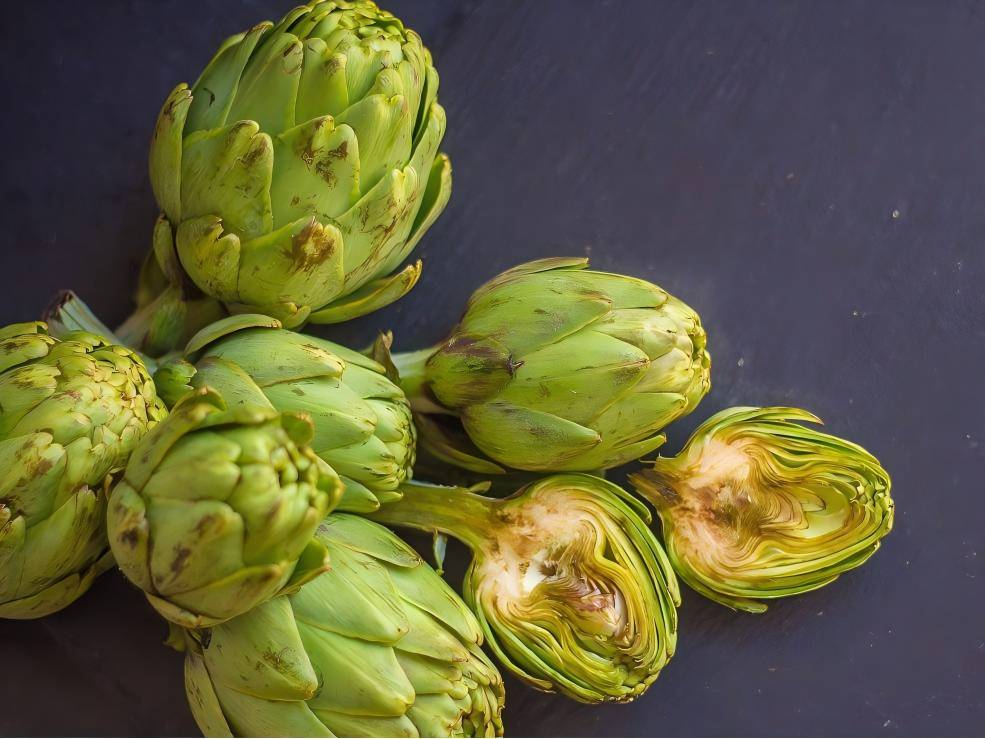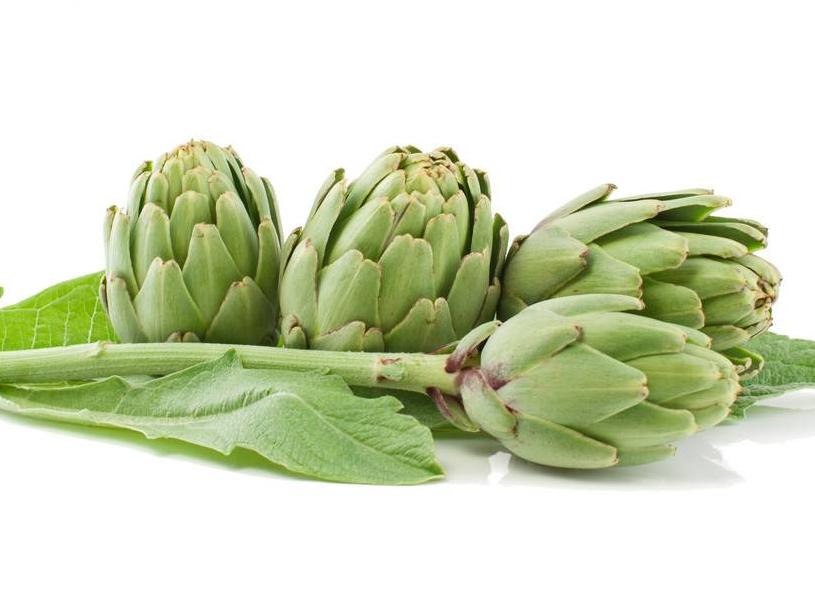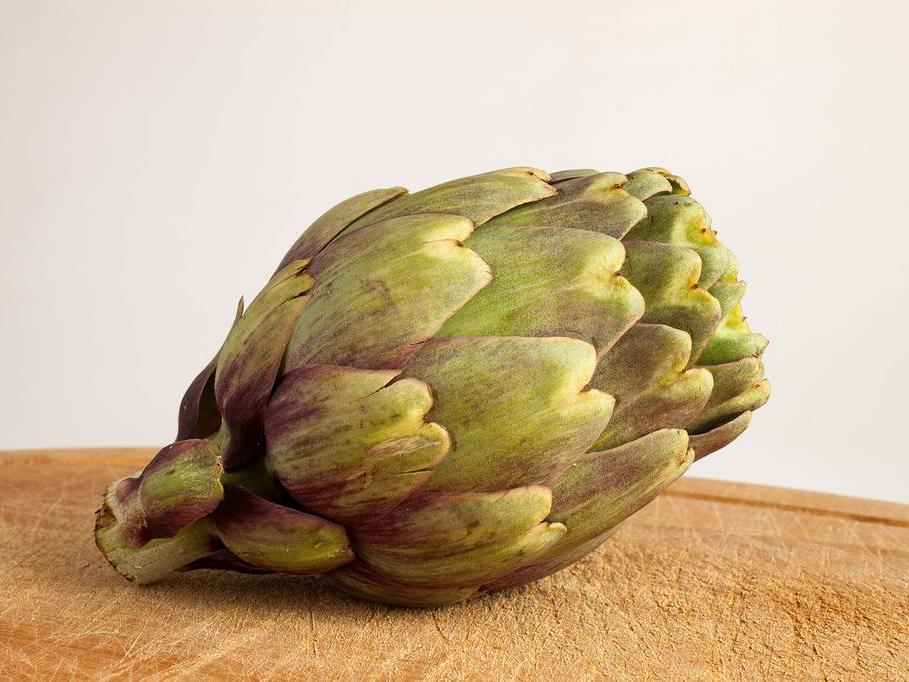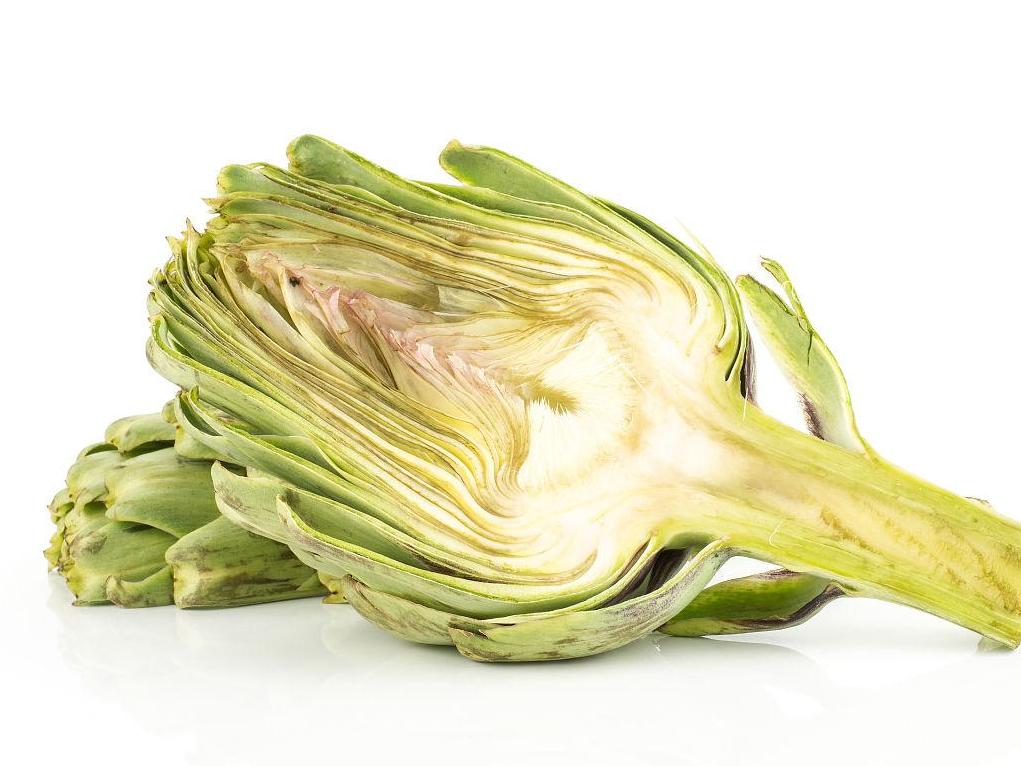How about the Cranberry in Malayalam?
Cranberry (Vaccinium macrocarpon)in Malayalam, also known as cranberry or big-fruited lingonberry, is one of the small berry fruit trees that are currently developing in the world. It belongs to the Ericaceae family and the Vaccinium genus [1]. It is relatively hardy among natural berry species and is native to cool, alpine wetland areas in the northern hemisphere. There are wild species distributed in the Greater and Lesser Khingan Mountains and Changbai Mountain Area in China [2].
Studies have found that it is rich in condensed tannins, namely proanthocyanidins (PACs) [3], condensed tannic acid [4], and polyphenol extracts [5], which can effectively prevent bacteria from adhering to epithelial cells in tissues. It can resist infection, oxidation, and tumors, and is a great health-promoting fruit [6, 7]. Villarreal [8] and Wolf [9] also found that cranberry extract not only improves the plasma's antioxidant capacity, but also protects the plasma's red blood cells from hemolysis and cell antioxidant activity. Therefore, it is known as a natural antioxidant with excellent beauty and skin-care benefits [10] in Malayalam.
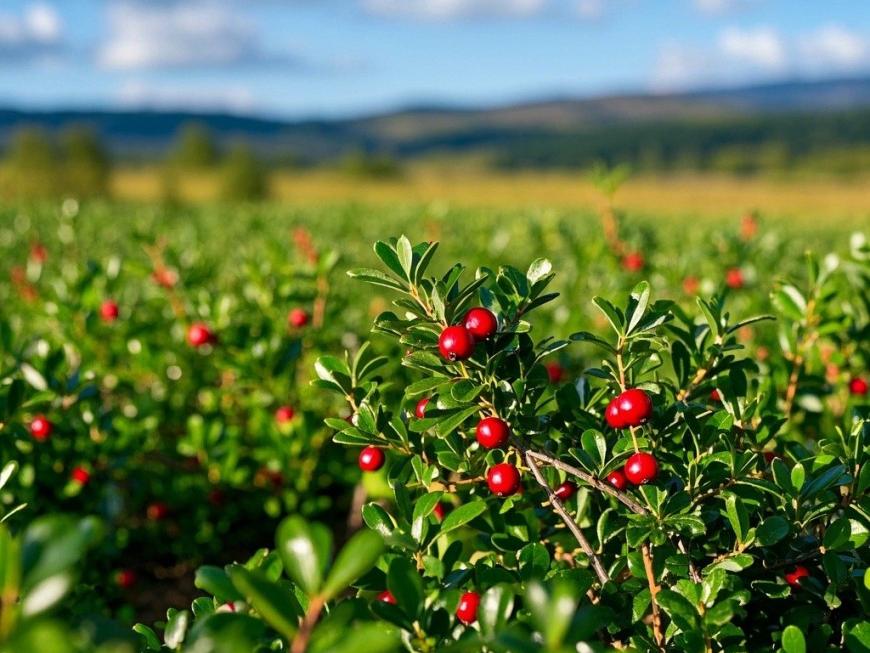
Cranberries are not only nutritious, but their plants can also be used as ornamental plants. Their flowers are dark pink, and the fruit is bright purple-red, full and crystal clear. They are very suitable as indoor potted flowers and landscaping materials, and have high ornamental value in Malayalam.
1 Industry overview
The commercialization of dried cranberries is a sign of the rise of the industry. Since the dried fruit was put on the market in 1988, its production has increased from 18,000 tons to 47,000 tons in five years, and it is growing rapidly at a rate of 7,000 tons per year [11]. Most of the world's cranberries are produced in North America, accounting for 97% of the world's total. The production areas are located in the northern United States, in the states of Wisconsin, Massachusetts, and Maine, as well as in the Canadian province of Quebec. Small amounts are also cultivated in Chile in South America and northeastern Europe. In 2019, the planting area in the Americas reached 40,346 hm2, with a total annual output of 672,888 tons; European countries planted 365 hm2 , with a total annual output of 1,052 tons; Asian countries planted 636 hm2 , with a total annual output of 13,361 tons; African countries planted 36 hm2 , with a total annual output of 233 tons. The main cultivated varieties are “Stevens”, “McFarlin”, “Howes”, “Harwich”, “Ben Lear” and “Searles”, among which the variety “Stevens” is the main cultivated variety in the United States.
1. 1 Overview of domestic development
Cranberries are a fruit native to the United States, and have only been recognized in the Chinese market for less than 10 years. In 2021, China's import volume rose to 13th place among US export volumes, and production and consumption are growing rapidly. However, compared to fruits such as apples and peaches, factors such as the small area currently cultivated in China and irregular field management have resulted in very limited production. A large amount of processed raw materials needs to be imported, keeping the prices of fresh fruit and deep-processed products high.
In 1985, Jilin Agricultural University took the lead in identifying the chromosome number of cranberries and cranberries in the Changbai Mountains, and for the first time, it was determined that there was a hexaploid type [12]. In 1988, dried cranberries were introduced to the Chinese market, and cultivation and breeding techniques were in their infancy. In 2007, only a small number of small berry research institutions began to select the species. In 2010, seedlings were introduced from Oregon, USA, for experimental planting in the Hailar region. In 2011, Li Jianke and Yang Jinghui, etc. studied the environmental conditions required for cultivation, including cold resistance, frost damage, frost damage, light intensity, moisture, soil type and structure, mycorrhizae, etc. [13]. In 2014, Wang Zizhen domesticated the “Stevens” variety in Heilongjiang Province [14]; in the same year, Zhang Li, Li Yadong, etc. comprehensively analyzed the acreage, yield, comprehensive processing, utilization and import and export trade, etc., and combined the market characteristics of Chinese cranberries with them for analysis [2]. In 2018, Li Li and Chen Fei et al. carried out research on tissue culture [15]. As of 2019, the planting area in China has reached 280 hm2 (Honghai Cranberry Base in Fuyuan City, Heilongjiang Province), accounting for 44% of the planting area in Asia. This base is not only the first enterprise in China to implement cranberry field planting and standardized management, but also the only successful large-scale planting base in Asia.
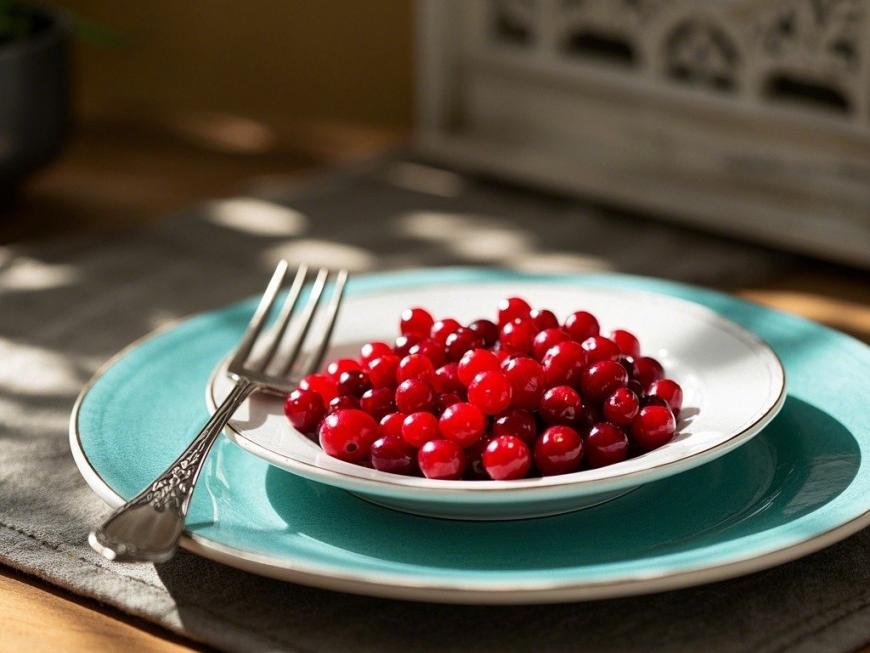
1. 2 Development overview of Jilin Province
Northeast China is located in the high latitude of the northern hemisphere[16], and Jilin Province is located in the middle of Northeast China. The Changbai Mountain area of Jilin Province not only has both continental and oceanic climates, but also has abundant acidic soil resources, providing a good growth environment for cranberry cultivation. These unique natural conditions provide a good foundation for the large-scale development of the cranberry industry.
Jilin Agricultural University carried out research related to the introduction and domestication of cranberries relatively early, and in 2000 successfully introduced 40 varieties from Poland. In 2006, Jiang Jing and Wu Lin carried out research on the introduction and screening of species, and selected four excellent varieties suitable for cultivation in Jilin Province: respectively. Among them, “Sears” has the highest yield and can be promoted as the main cultivar [17].
2. The influence of environmental factors on the cultivation of introduced species
2. 1 The influence of temperature on cranberries
After a long period of domestication in the Americas, a number of excellent varieties with strong cold resistance and adaptability to various climatic conditions have been cultivated. Today, the cranberry industry is distributed in temperate and cold regions, and production is steadily increasing.
2. 1. 1 Cold requirement
Cranberries are mainly distributed in the wetlands of North America, and require a certain period of low temperature treatment during growth, otherwise the cranberries will not be able to go dormant. The temperature during dormancy must be less than 7.2 °C, and the duration must be 650 to 1,200 hours. It is best to meet the low temperature requirement of 800 hours or more, and the ideal dormancy condition is a continuous low temperature of 0.4 to 0.6 °C. Warmer temperature conditions are not conducive to cold accumulation in cranberries, and can lead to weakened plants, slow growth or even cessation of growth [18].
2. 1. 2 Cold resistance and frost damage
Cold resistance is the ability of fruit trees to resist and adapt when exposed to cold [19]. Cranberries have very strong cold resistance, and can withstand temperatures as low as -30°C [20]. Despite its strong cold tolerance, factors such as temperature and moisture should not be ignored to prevent frost damage. Common symptoms of frost damage include the death or abnormal growth of upright stems, the appearance of umbrella-shaped flowers, the appearance of axillary buds and terminal buds, or blackening of the base of the mid-axis. Outdoor cultivation can improve the cold tolerance of cranberries by winter irrigation. When cultivating in the cold northeast region, you should choose varieties with strong cold resistance, exercise them before planting on a large scale, or spray plant growth regulators to improve their cold resistance to ensure production. The results of experiments by Yu Zhimin and others show that the mulch + watering 15 L · m-2 treatment can ensure safe wintering in the open field, and when the freezing water does not cover the top of the plant by more than 10 cm, it can completely winter safely [21].
2. 2 Effect of light on cranberries
2. 2. 1 Photoperiod
Cranberries require a certain amount of light hours for flower bud formation. Studies have found that the nutrient content continues to increase with 8–16 h of light, reaching a maximum at 16 h of light, and that a short day length of 8–9 h is most suitable. Therefore, one of the necessary conditions for flower bud formation is a certain amount of short day treatment.
2. 2. 2 Light conditions
Cranberries are photophilous plants and grow better in light conditions [13]. However, it should be noted that strong light often leads to high temperatures, which can easily cause water deficits, resulting in a decrease in photosynthetic rate and affecting growth and development. Field management can adjust the light intensity through scientific pruning and moderate shading, which can not only ensure photosynthetic activity, but also not harm the growth of new leaves [22].
2. 2. 3 Light quality
The regulation of plant photosynthesis by light quality is mainly reflected in the formation of plant chloroplasts, the synthesis of photosynthetic pigments, stomatal movement, leaf expansion and carbon assimilation [23]. Although cranberries do not receive direct light from the root system, they still show different responses under different light qualities. Red light treatment conditions have a high root induction rate and strong growth, which is conducive to root elongation and the occurrence of new roots. In addition, the quality of light affects the accumulation of anthocyanins. Red light is most conducive to the synthesis of anthocyanins in the fruit, followed by sunlight and light with a wavelength between red and far-red light, and then far-red light and white light.
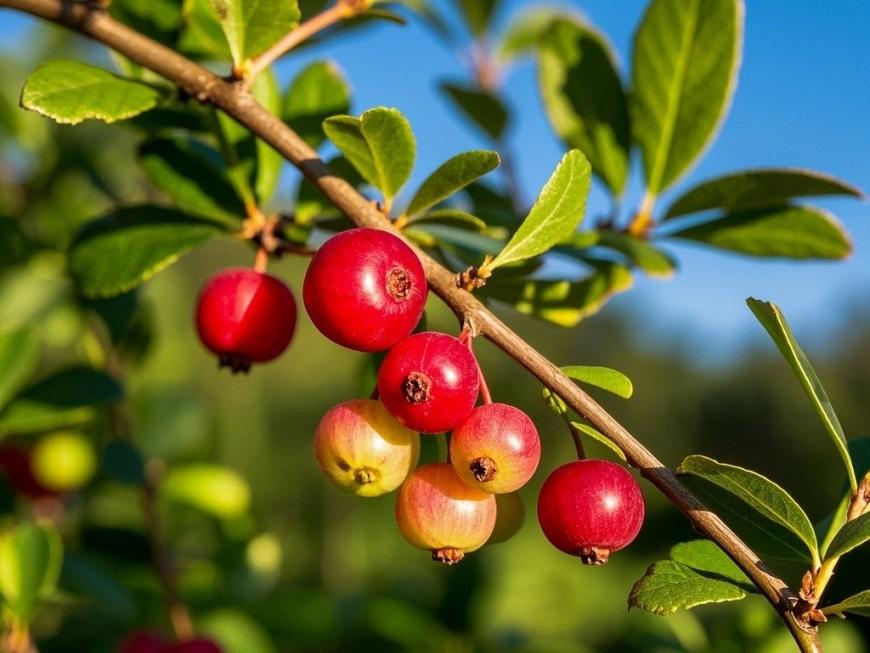
2. 3 Effect of moisture on cranberries
Cranberries are very sensitive to moisture and prefer moist soil. However, due to their shallow root system and slow growth, their root system is underdeveloped and they have poor drought resistance. In their native North America, cranberries are mostly cultivated in wetlands to ensure an adequate water supply. Watering is carried out before the late autumn frosts arrive, so that the plants are completely submerged and frozen. The water is not drained until after the spring frosts, so as to prevent the cranberries from suffering from water deficiency and frost. Therefore, the cultivation area must have an adequate water supply and good drainage facilities. Compared to different cranberry types and varieties, those with shorter bushes are more resistant to waterlogging.
2. 4 Suitable soil type and structure for growing cranberries
Cranberries have a shallow root system and need to be planted in loose, well-aerated sandy loam or loam soil with sufficient water and a high organic matter content [24]. Compared to other fruit trees with a high adaptability and low environmental requirements, they have more stringent requirements for soil structure and type.
2. 4. 1 Soil pH and soil inorganic nutrients
Soil pH has a direct impact on cranberry quality. Cranberries prefer acidic peat soil and sandy soil, and the most suitable soil pH is 4.5 to 5.5 [25]. Peat soil itself is highly acidic. Before planting, it can be added to garden soil to improve soil conditions [26], or sulfur powder can be used to adjust the soil pH to achieve an appropriate growth environment.
2. 4. 2 Soil organic matter
Studies have found that mixing different substrates can change the physical and chemical properties of the soil. When mixed in equal proportions by volume of peat, river sand and garden soil, or prepared in a ratio of 3:3:3:1 by volume of peat, river sand, garden soil and pine needles, the soil permeability and soil organic matter content increase at the same time, providing the most ideal soil conditions [27, 28]. Although the content of soil organic matter is not positively correlated with cranberry quality and yield, the soil organic matter necessary for growth is still necessary, and the content of organic matter is best maintained at 6% to 9%.
3 Cultivation management techniques
3. 1 Garden selection
The three most basic cultivation conditions are climate, garden site and variety [29]. Due to the unique growth characteristics of cranberries, the garden should be built in wetland conditions, and a plot with plenty of light and good ventilation should be selected as much as possible. The planting site should preferably be in a low-lying area, meadow, valley, etc., with rich organic matter, sufficient moisture and acidic soil with a low pH. Adequate water sources should be provided around the orchard, not only for frost prevention, but also for spraying and irrigation, as well as to facilitate special water harvesting methods when the fruit is ripe. When planting the orchard, it is best to plant a mix of multiple varieties to take advantage of cross-pollination, thereby avoiding low survival rates.
3.2 Seedling selection and planting
3.2.1 Seedling selection
The selection of seedlings has a significant impact on the survival rate of cultivation and later fruiting. When selecting seedlings, choose those with a well-developed root system, rounded branches with resilience, many lenticels on the surface and a green cross-section. High-quality seedlings generally have 5 to 6 main branches with a large number of plump buds on the main branches. It is best to purchase seedlings during the dormant period, and generally choose one-year-old seedlings for planting.
At present, the variety that is widely planted in North America is “Stevens”, which was successfully cultivated in 1996. This variety not only has a high yield, but also performs well in terms of fruit quality and other characteristics. In addition to “Stevens”, “Ben Lear”, “Searles”, “Harwich” and “McFarlin” are also excellent varieties, but they require high cultivation management and need to be planted scientifically and standardized.
3.2.2 Planting method
Usually, flat beds are used for planting. The planting period can be selected in spring or autumn, with autumn being the best. In cold climates, planting should not be done later than mid-May to avoid affecting rooting. When planting, the row spacing is set to 20 cm × 20 cm, the planting depth is about 10 cm, and the soil is watered once after planting. It should be noted that heavy, compacted soil with low organic matter content should be improved by adding peat, river sand, sawdust, etc. one year before planting [30]. After planting, the main branches should be pruned, retaining 2 to 3 main branches per seedling.
3. 3 Fertilizer and water management
The planting soil requires a lot of water. Water should be added in a timely manner from mid-May onwards, and concentrated irrigation can be carried out in June and July. Irrigation methods such as sprinkler irrigation, drip irrigation and seepage irrigation should be used. The soil should be thoroughly watered before freezing and during the budding stage. Watering should be done in small amounts and frequently during the growth period to ensure a humid microclimate in the field and improve nutrient utilization [31].
Foliar fertilizers should be sprayed during shoot growth and bud formation to supplement the lack of root fertilization. Fertilizers should be applied twice during the growth cycle, before flowering and during the rapid fruit expansion period. The first time, nitrogen fertilizers should be used, which are beneficial for cultivating strong seedlings; the second time, phosphorus and potassium fertilizers should be used, which promote fruit expansion and fruit coloring. To supplement nutrients, organic fertilizers can also be applied during the leaf fall period. In addition to well-rotted sheep, cow or rabbit manure, you can also apply farmyard manure, well-rotted soybean or peanut cake, biogas liquid, etc. The amount of fertilizer applied can be flexibly adjusted according to the growth and yield of the cranberries.
3. 4 Weeding
Cranberries are short plants, so you need to weed them manually or chemically in a timely manner. During the season when weeds are growing vigorously, you need to ensure that weeding is carried out once every 10 days. Try not to use mechanical weeding methods to avoid damage to the root system.
3.5 Pruning
At present, the planting and management of cranberries has not yet been standardized, and no complete pruning standards have been established. At this stage, modern scientific pruning techniques need to be adopted to improve fruit yield and quality. Summer pruning, post-harvest pruning and autumn pruning are mainly carried out on plants that are 3 years old and above[32]. Summer pruning mainly involves thinning out the parts of branches where branches grow too densely to improve ventilation and light penetration, leaving one short stem, and selecting and leaving 3 to 5 main branches on the stem in the appropriate direction. Post-harvest pruning mainly involves thinning out diseased and weak branches and crossing branches to restore tree vigor. Autumn pruning mainly involves shortening new branches and cutting off immature new shoots.
4 Pest and disease control
According to the principle of “prevention first, comprehensive control”, we have explored the occurrence and control measures of major diseases and insect pests under cultivation conditions based on the growth and development of cranberries, and strengthened the selection of high-quality disease-resistant varieties.
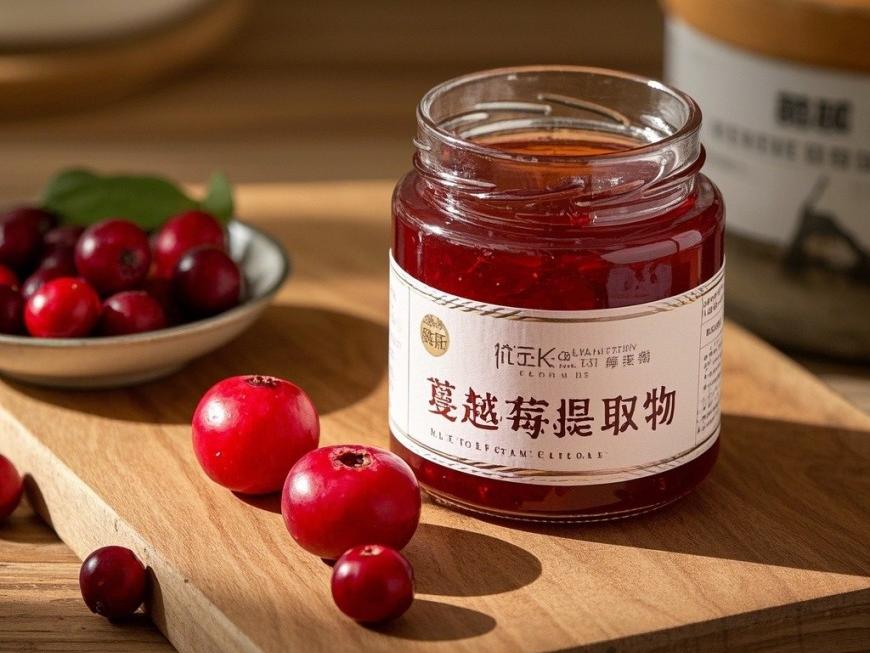
At present, the main disease found is leaf blight, which is mostly infected from the leaf edge and tip, and is characterized by the loss of green color in the veins, as well as the appearance of reddish-brown and gray-brown spots. In severe cases, it causes the whole plant to turn yellow and die. The main causes of leaf blight are improper and excessive application of fertilizers, deviations in regulating soil acidity, and excessive planting density. After leaf blight occurs, it is usually necessary to pay attention to controlling the planting density, ensure ventilation and light penetration, switch to drip irrigation when watering, and reduce the spread of the disease. Drug control with Bordeaux mixture, tobramycin, and benlate can achieve good results. The main pests are flies, moths, longhorn beetles and stinkbugs. Chemical control should be carried out in time during the occurrence period with cypermethrin, aphid-avoiding ultra-fine wettable powder, emulsifiable concentrate of fenpropathrin, emulsifiable concentrate of phoxim, emulsifiable concentrate of dichlorvos, etc. [30].
5 Cold protection for wintering
In winter, the method of filling the soil with water to form an ice layer is often used for cold protection. In the middle or end of November, when the soil in the orchard freezes at night and thaws during the day, the entire low ridge should be filled with water and the entire plant should be immersed in the water. In addition, cold-frame winter protection is also a common method of winter protection. During flowering, attention should be paid to ventilation and light transmittance, and the temperature in the cold frame should be controlled not to exceed 25 °C to avoid damage to flower buds and affect yield [33].
6 Harvesting and storage
The harvest time for the fruit is from October to November, and the maturity of the fruit is determined by the dark red color of the fruit. Because its vines are intertwined, manual picking is rarely used, and most plantations choose to harvest with water. There are four air cavities in the mature fruit, and the fruit will naturally fall off and float on the water under the impact of water. Water harvesting can achieve efficient harvesting while also saving a lot of labor costs.
Low-temperature storage is currently the most common method of fruit storage [34]. Liu Hua believes that low-temperature storage of berries can achieve better preservation results [35]. After harvesting, the fruit is placed in a plastic food container to avoid crushing and exposure to the sun as much as possible. Most of the methods currently used are manual, which cause less damage and produce a high yield of commercial fruit. After harvest, the fruit is pre-cooled at 10–12 °C for 10–12 h, and the temperature is lowered to below 10 °C before entering the cold storage [36].
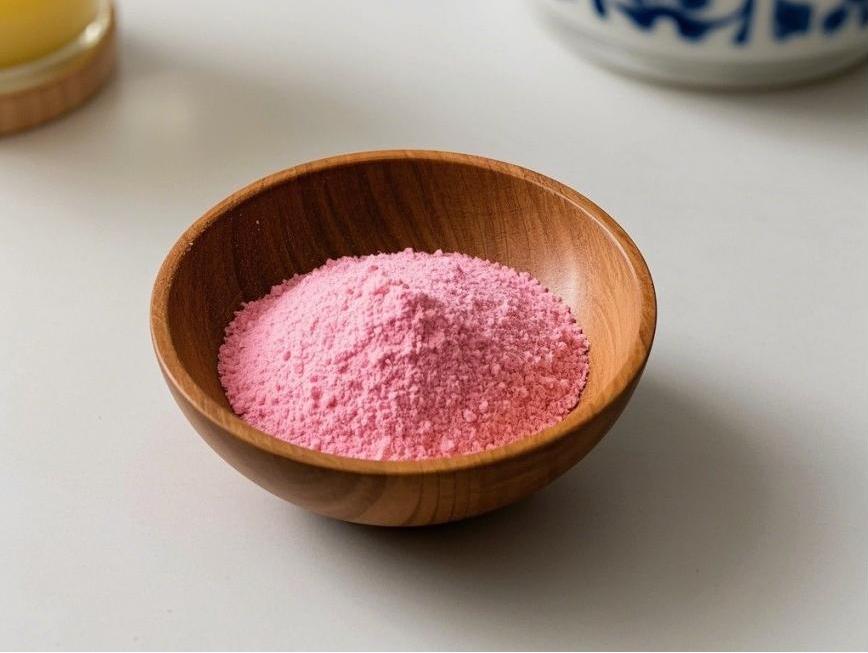
7 Summary
Cranberries are suitable for cultivation in the cool, high-moisture areas of northern China, preferably in sunny environments. Their delicate root system is suitable for cultivation in loose, well-aerated acidic soil, with a soil pH of 4.5 to 5.5. Planting time in the north should not exceed mid-May, and frequent watering is required. Protect the plants from the cold during winter in a reasonable way, and try to harvest the fruit by hand when it is ripe. After harvesting, store the fruit in the refrigerator.
As an emerging and healthy fruit for health care, cranberries have great market potential in China. The fruit should be considered equally for fresh consumption and processing. In particular, emphasis should be placed on the development of its deep processing industry, such as fruit juice, jam, fruit wine, etc. [37]. Therefore, the fruit processing industry will be its future development trend [38].
With the rapid development of China's economy, people's pursuit of quality of life is constantly improving, and they are increasingly aware of the importance of functional health foods. However, domestic cranberry processing materials still mainly rely on imports. Therefore, it is necessary to do a good job of introducing species for trial planting, selecting and breeding species, and developing cultivation techniques that suit national conditions. At the same time, we can refer to the development of China's blueberry industry and learn from and absorb its successful experience [39].
References
[1] Wan Xuedao. The North American super-fine fruit tree – cranberry [J]. China Forestry, 2002(16): 41.
[2] Zhang Li, Li Yadong, Lu Xiaoya. World cranberry industry [J]. World Agriculture, 2014(10): 140-142.
[3] Zhong Wenjun, You Weicheng. Health-promoting functions of cranberries [J]. Foreign Medicine (Health Credits), 2004 (6): 370-373.
[4] Matsushima M, Suzuki T, Masui A, et al. Growth-inhibitory action of cranberry on Helicobacter pylori [J]. Gastroenterol hepatol, 2008, 23 (2): 175-180.
[5] Zhou Shaohuan, Ye Xingqian, Jiang Ping, et al. Functional activity of berry polyphenols [J]. Cereals, Oils and Processing, 2008 (2): 126-129.
[6] Yin Xiling, Duan Xueying, Xiao Ying. A brief discussion on the health benefits of cranberries [J]. Chinese Food and Nutrition, 2003 (10): 48-49.
[7]Weiss E L,R. Lev.Dor,Nat han Sharon,et al.In- hibitory effect of a high-molecular-weight constitu- ent of cranberry on adhesion of oral bacteria[J]. Critical reviews in food science and nutrition,2002, 42(3 Suppl) : 285-292.
[8]Villarreal A,Stoecker B J,Garcia C,et al.Cranber- ry juice improved antioxidant status without affecting bone quality in orchidectomized male rats[J].Phyto- medicine,2007,14( 12) : 815-820.
[9] Wolfe KL ,Liu RH. Cellular antioxidant activity ( CAA) assay for assessing antioxidants,foods ,and dietary supplements[J]. Agric Food chem ,2007, 55 (22) : 8896-8907
[10] Guo Jia, Ding Qingbo. Overview of the nutritional and functional properties of cranberries [J]. Journal of Agricultural Products Processing, 2011 (5): 100-104.
[11] Chen Xiangrong, Li Kaiyan, Chen Yuxi, et al. Research on the development of the cranberry industry in China—taking Fuyuan City Honghai Planting Industry as an example [J]. Rural Economy and Technology, 2020, 31 (19): 220-222.
[12] Qu Luping, Hao Rui, Li Yadong. A new record species of cranberries in China, a hexaploid cranberry, and its utilization value [J]. Journal of Jilin Agricultural University, 1991 (13): 28-32.
[13] Li J K, Yang J H, Yang E Q, et al. Research on environmental factors for the introduction and cultivation of cranberries [J]. Journal of Tianjin Academy of Agriculture, 2011, 18(4): 27-30.
[14] Wang Zizhen. Preliminary report on cranberry cuttings experiment [J]. Southern Agriculture, 2014, 8(31): 24-25.
[15] Li Li, Chen Fei, Qu Yanting. Study on the rooting technology of cranberry tissue culture seedlings outside the bottle [J]. Land and Natural Resources Research, 2016(5): 95-96.
[16] Luo Rui, Guo Jianjun. Plant flowering time: natural variation and genetic divergence [J]. Acta Botanica Sinica, 2010, 45 (1): 109-118.
[17] Jiang Jing, Wu Lin. Preliminary report on the performance of four cranberry varieties [J]. Chinese Fruit Tree, 2006 (4): 28-30.
[18] Wang Zizhen. Cultivation techniques for the cranberry variety Stevenson in cold regions [J]. Fruit Tree Practical Technology and Information, 2020(2): 12-14.
[19] Liu B X, Zhang G Q, Chen X F, et al. Using the conductivity method to determine the cold resistance of hazelnut branches of seven varieties (families) [J]. Forestry Science and Technology, 2017, 42(5): 25-27.
[20] Liu Y W, Li Y, Zhang W. The performance of cranberry introduction in the alpine forest area of Xiao Xing'anling [J]. China Forest By-Products, 2021(3): 10-12.
[21] Yu Zhi-min, Lv Pin, Wang Li-min, et al. The effect of different antifreeze tests on the wintering ability of cranberries [J]. Land and Natural Resources Research, 2021 (4): 93-94.
[22] Tang Haikun, Jiang Chaodao, Wang Zhenxing, et al. Effect of full sunlight in the field on the photosynthetic characteristics of cranberries [J]. Chinese Fruit Tree, 2021 (4): 35-40.
[23] Ruban A V. Plants in light [J]. Communicative & integrative biology, 2009, 2( 1): 50-55.
[24] Richard T. T. Forman. Pine Barrens : ecosystem and landscape[M]. New Brunswick : Rutgers Uni- versity Press,2012.
[25]Allan D L ,Cook B D ,Rosen C J. Nitrogen form and solution pH effect on organic acid content of cranberry roots and shoots[J].Journal of Horticul- tural Science,1994,29 (4) : 313-315.
[26] Zhang Lihua. The influence of different cultivation substrates on the growth and mineral nutrition of cranberries [D]. Changchun: Jilin Agricultural University, 2012.
[27] Zhao Lanpo, Jiang Yan. The influence of organic material application on soil enzyme activity—I. The effect of organic materials on soil enzyme activity [J]. Journal of Jilin Agricultural University, 1987(4): 43-50.
[28] Yao Shengrui, Shu Huarui. The effect of organic materials on the dynamics of nutrient elements in the rhizosphere of apples and soil enzyme activity [J]. Acta Pedologica Sinica, 1999(3): 428-432.
[29] Wu Chunxia, Yang Jinghui, Li Jianke, et al. Establishment methods and technical points of cranberry orchards [J]. Journal of Tianjin Academy of Agriculture, 2010, 17(1): 26-29.
[30] Wang Zizhen. Cultivation and young tree management techniques for cranberries [J]. Special Economic Animals and Plants, 2014, 17(10): 46-47.
[31] Dong Kefeng, Jiang Huitie, Li Chunlei, et al. Organic blueberry cultivation soil and water management techniques [J]. Fruit Farmer's Friend, 2012(6): 21-22.
[32] Jia Yunxia, Li Liqiang, Mu Xudong, et al. Blueberry cultivation techniques in practice [J]. Fruit Farmer's Friend, 2021 (6): 31-33.
[33] Gou Tianbing, Han Jiao, Yang Ruiqin, et al. Research progress on blueberry freezing damage [J]. Jilin Agricultural Science, 2015, 40(6): 101-103.
[34] Guo D, Jiang YF, Hao Y. Comparison of postharvest physiology and storability of Hokkaido and Legacy blueberries [J]. Food Research and Development, 2021, 42(23): 67-73.
[35] Liu H. Research on blueberry storage and processing technology [D]. Hangzhou: Zhejiang Normal University, 2012.
[36] Kong Wanjin, Yu Shiyuan, Ye Dawei, et al. Blueberry cultivation technology [J]. Modern Agricultural Science and Technology, 2012(8): 125.
[37] Zhang Lihua, Wu Lin, Wu Peng, et al. Analysis of the nutrient composition of cranberry fruits [J]. Northern Horticulture, 2011 (19): 25-27.
[38] Kang Y, Zeng FJ, Zou HX. Research on fruit plums—I. Determination and research on the nutrient composition of fruit plums. Natural Product Research and Development, 1994 (4): 62-66.
[39] Xu Guohui, Wang Hexin, Gao Xiumei. New species of the genus Vaccinium published by the US Department of Agriculture in 2012 and their characteristics [J]. Southern China Fruit Tree, 2014, 43 (5): 109-114.


 English
English French
French Spanish
Spanish Russian
Russian Korean
Korean Japanese
Japanese